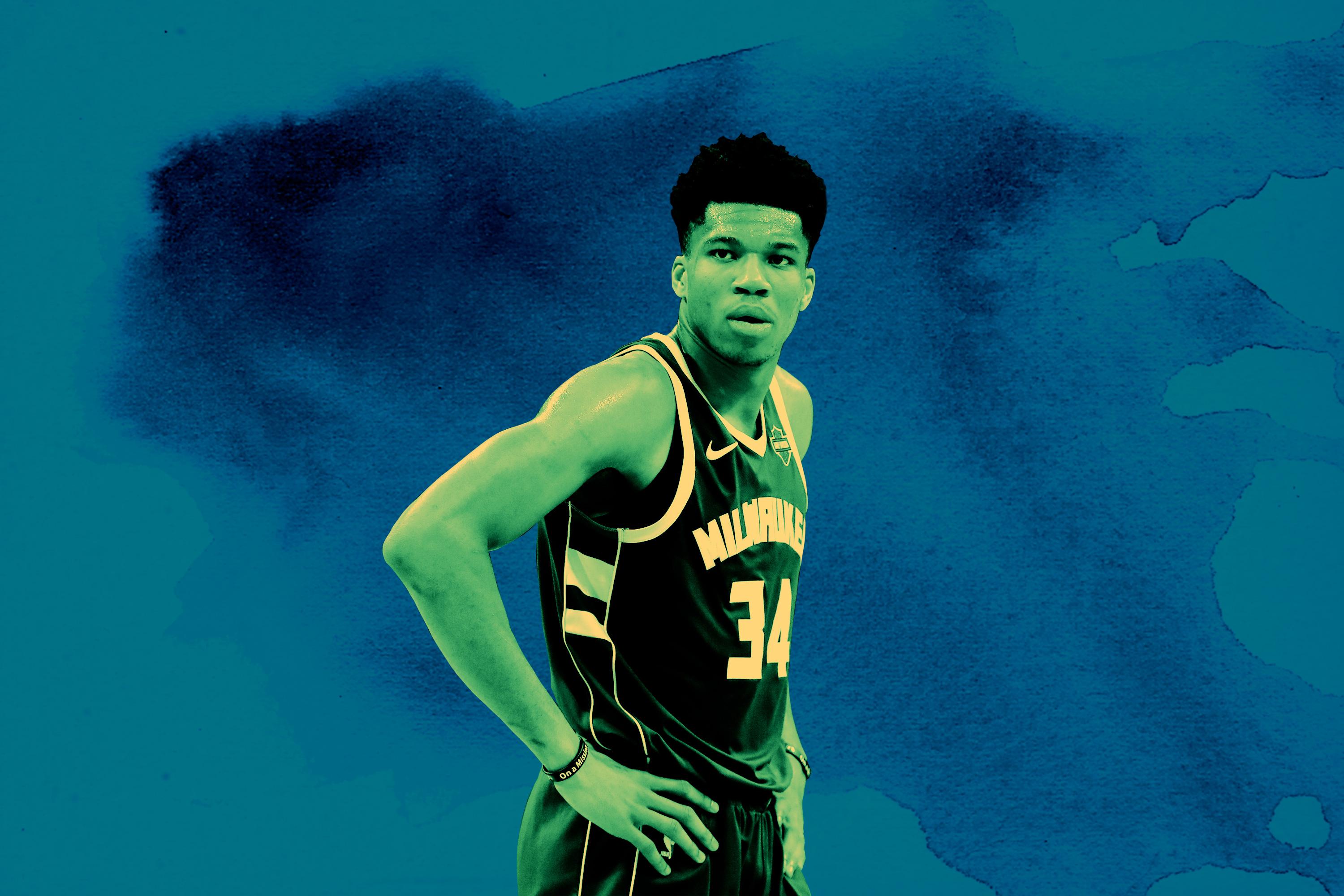
The middle of the fourth quarter of Milwaukee’s matchup with Orlando on Wednesday night felt like a Vine loop.
The Magic would settle into the half court, pass the ball around the perimeter, then drive to the hoop like they were in a layup drill and score or kick it out to an open shooter for a 3. Then the Bucks would give the ball to Giannis and watch him step into a tough midrange jumper. Giannis took 11 shots in the final frame, six of them 2-pointers more than 10 feet from the hoop. No other Buck took more than five total shots in the fourth. Orlando, as a team, drained five 3s in the period, had a franchise-record 18 on the night, and won 126-117. That point total was the most that Milwaukee has allowed since interim head coach Joe Prunty took over the team from Jason Kidd, who was fired in late January.
Prunty called the performance a “horrible effort.” Giannis said it was a “terrible loss.” Even those descriptions feel like understatements when you consider that the Magic are 21-48, trying to tank, had just returned to Orlando after a five-game West Coast road trip, and were playing on the second night of a back-to-back. The loss was one of Milwaukee’s worst performances of the season, and though the Heat’s equally awful loss to the Kings (also Wednesday night) kept the Bucks in the seventh spot in the East, they don’t own any tiebreakers over the Heat or the 6-seed Sixers.
This isn’t where Milwaukee was supposed to be. Giannis began the season looking like the league’s MVP, while flanked by a handful of dynamic teammates. The team returned Rookie of the Year Malcolm Brogdon and Khris Middleton, got former no. 2 overall pick Jabari Parker back from an ACL injury, and added Eric Bledsoe in a midseason trade. Everything pointed to the Bucks finishing as one of the top four or five teams in the East this season.
Through a tumultuous season, the Bucks have been too reliant on their 23-year-old superstar. Wednesday’s game perfectly encapsulated Milwaukee’s lack of imagination: Giannis finished with 38 points and 10 rebounds, but the Bucks were minus-94 points per 100 possessions when he wasn’t on the floor. That’s not a typo. That’s a problem.
The Bucks season has been split into two eras: With Kidd, they went 23-22 and had a bottom-six defensive rating, but the eighth-best offense in the league. Under Prunty, things have flipped. Milwaukee has the eighth-best defense in the league, but its offensive rating has dropped to 15th. The Bucks have gone 13-10 since Kidd was fired. They’re shooting three more midrange shots a game under Prunty and continue to eschew the 3-point shot (they make the fourth-fewest in the league). Moreover, they are one of the league’s worst 10 teams at defending the 3-point shot and the worst rebounding team in the league, while simultaneously allowing the fifth-most points in the paint since Prunty took over.
Watching the Bucks now has boiled down to waiting for Giannis to do something extraordinary. Almost everything else that happens for Milwaukee, especially on offense, is an eyesore or simply a bummer. The Bucks don’t have good-enough players around the Greek Freak; they have yet to find or develop the right second fiddle. And what that says about the Bucks future isn’t promising.
Khris Middleton is having a career scoring year, but his 3-point shooting has dropped off (35 percent) with an uptick in attempts. He’s by far Milwaukee’s second-best player, but he’d be the third- or fourth-best player on a title team. Parker, meanwhile, is a conundrum. He’s immensely talented and only 23 years old, but he will be a restricted free agent next season, and he hasn’t produced consistently since returning from last season’s knee injury in February. Parker will present the team with a tough decision in the coming offseason.
The Bucks are giving John Henson more than 25 minutes a night (28 in February), when he’s unable to stretch the floor without a long-range shot and isn’t skilled enough to score consistently in the paint, either. Henson is under contract until 2020 for about $10 million a season. Then there’s Thon Maker, whose minutes have more than doubled from his rookie season, but have not resulted in more production. He is still young, but he looks less like a future star than a draft gamble that hasn’t paid off.
Milwaukee is set to have over $100 million committed to the team next season as of Thursday, including Eric Bledsoe at $15 million. The trade for Bledsoe was the right move, but it’s fair to wonder if he fits alongside ball-dominant Giannis in the long term, and if he—just like Middleton—can tap into a higher level befitting of a second star in the system.
What is the Bucks’ system, though? Giannis can try to carry this team, but he shouldn’t have to. Milwaukee’s strategy will likely change, or be implemented in the first place, after the team hires a new coach this summer, but for now, it has problems. And Giannis is a big star in a small market: Even though he won’t reach free agency until 2021, that hasn’t stopped Joel Embiid and Steph Curry from subtly (and not-so-subtly) recruiting him. Somehow, the Bucks need to improve around him even if the options are slim and the future feels bleak. Milwaukee shouldn’t be an 8-seed.
Yet, when the playoffs arrive and the Bucks find themselves entangled with the Raptors in the first round, how surprised will we be if Giannis goes supernova and leads Milwaukee to an upset? That possibility alone is the franchise’s blessing and its dilemma. The Bucks have the superstar they need. But the question, as always, is: Will they build the right team around him?